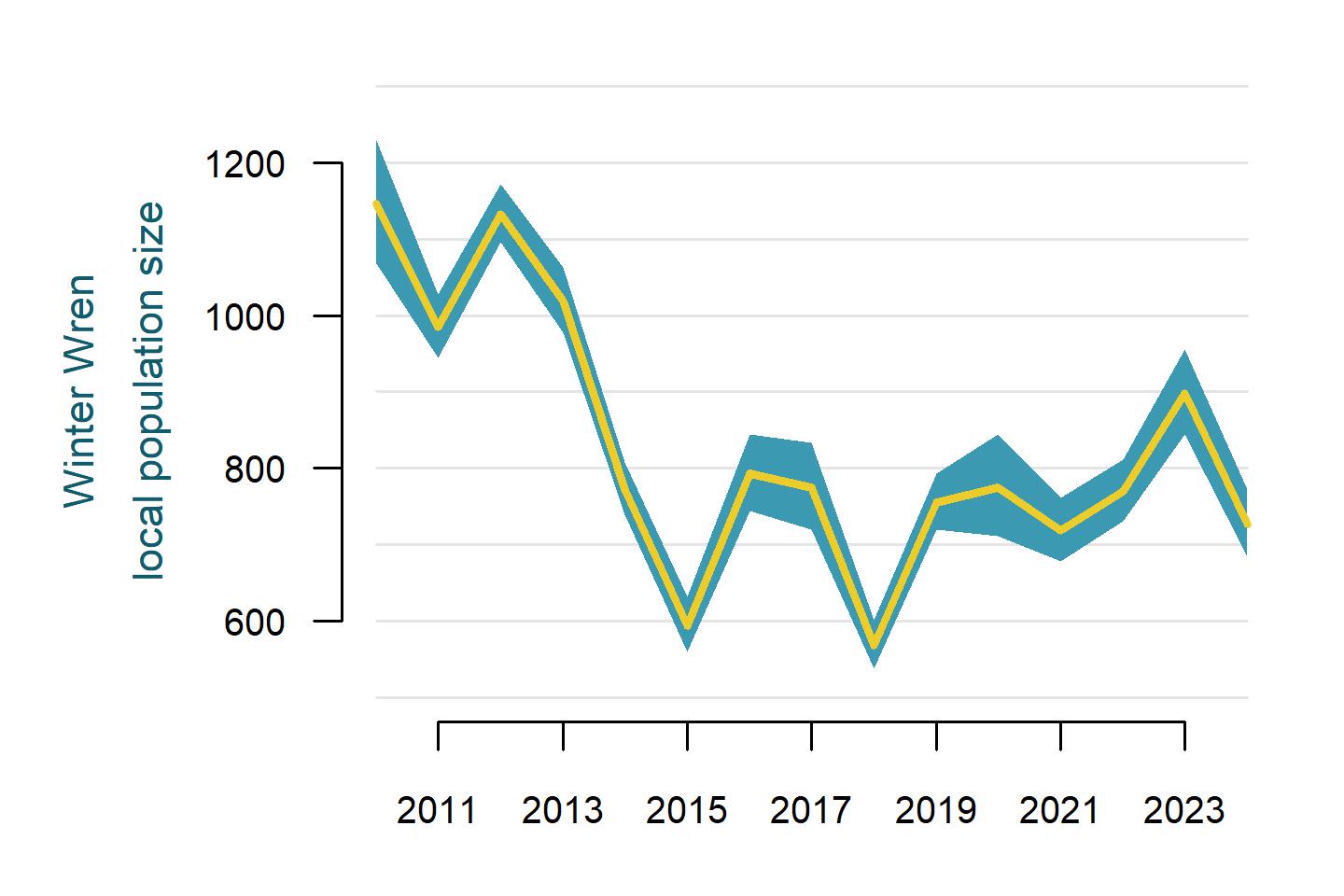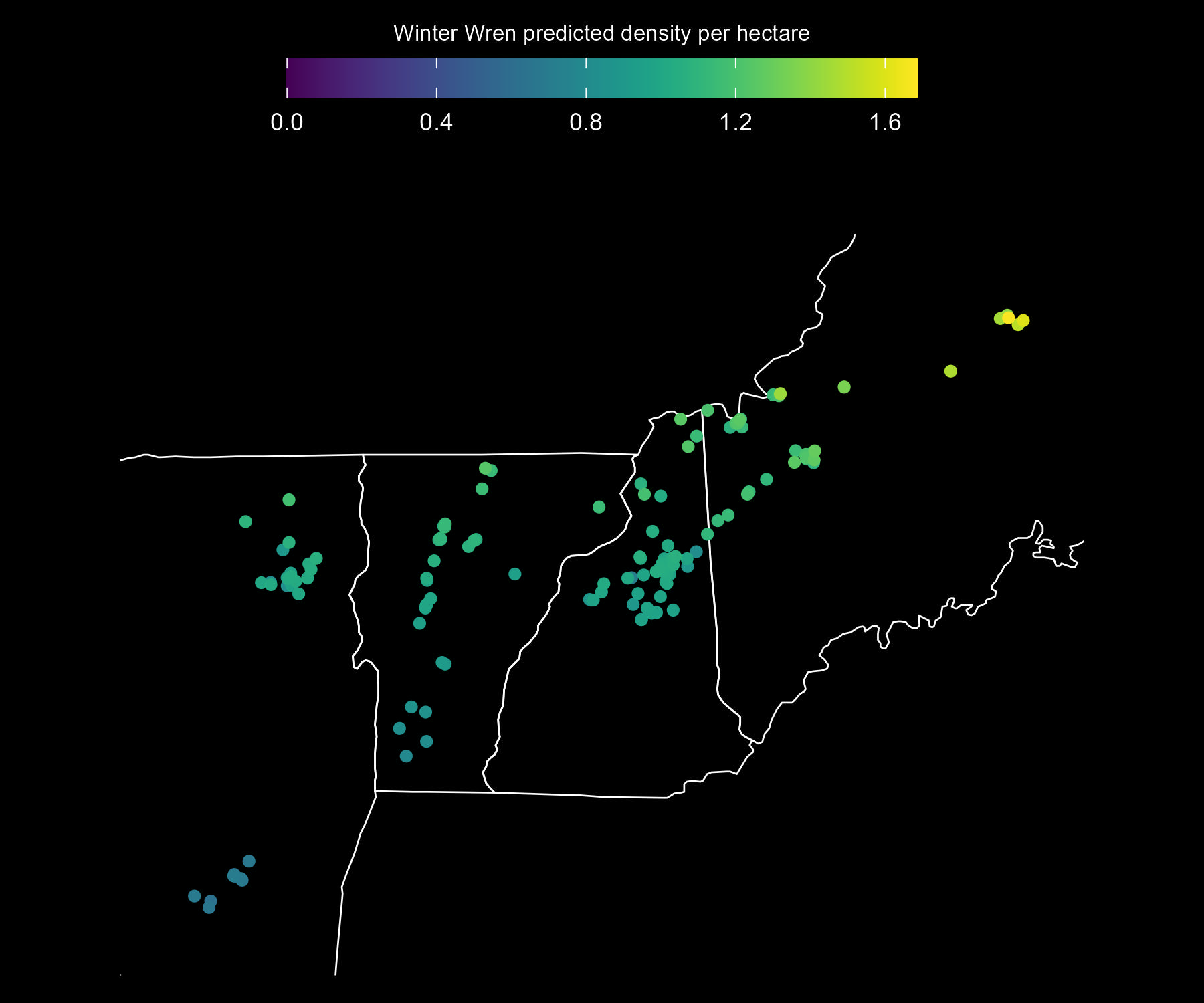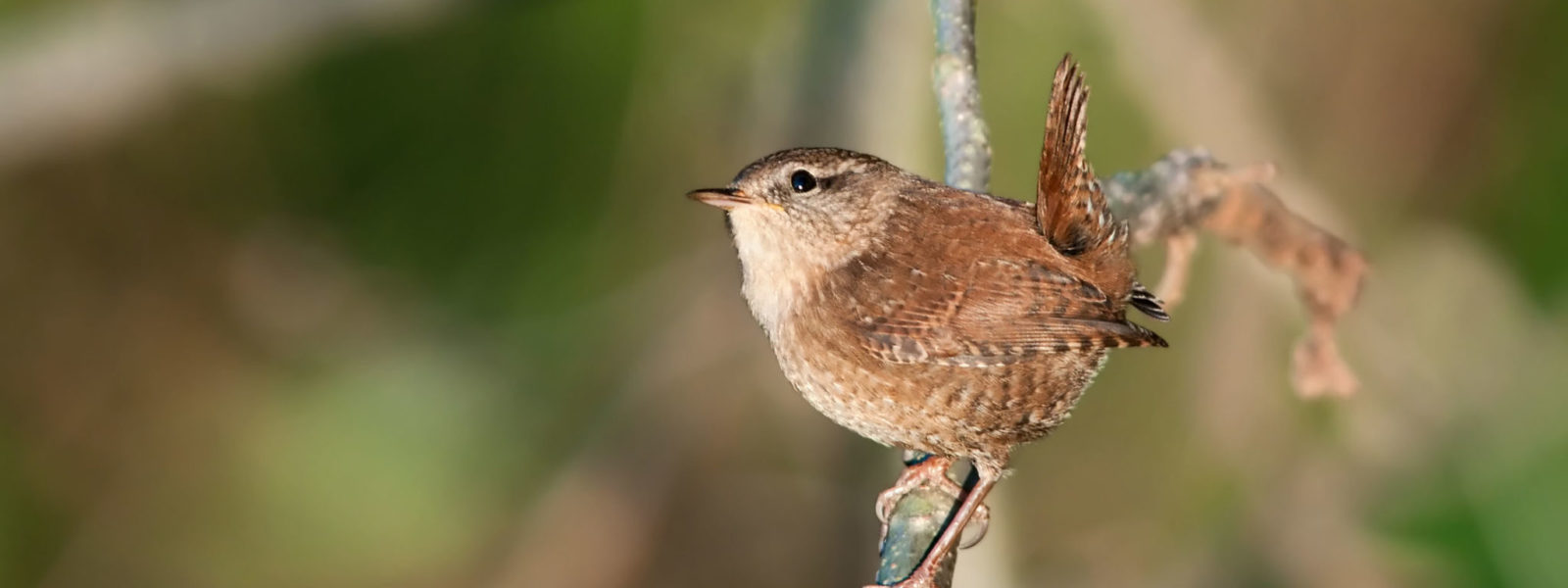The State of Winter Wrens in the Northeast
Regionally: Stable, for the moment, following a sharp decline

The mean (thick, yellow line) annual estimate of Winter Wren abundance within the immediate area surrounding all 803 Mountain Birdwatch sampling locations, with a 95% Bayesian credible interval (blue polygon, representing estimate uncertainty).
The numbers of Winter Wrens counted during Mountain Birdwatch surveys have been declining since at least 2012. Since 2010, the overall numbers of Winter Wren in our study area have changed by -2.56% per year (80% Bayesian credible interval = -4.14% to -0.94%). This equates to a ~30% overall reduction in population size over the last 15 years. In the both Mountain Birdwatch and the North American Breeding Bird Survey data sets, Winter Wren numbers fluctuate up and down frequently–these fluctuations may be related to severe winter mortality.

Predicted Winter Wren adult density per approximate hectare in an average year (between 2010 and 2024), as estimated from Mountain Birdwatch data. The base map shows the extent of the Mountain Birdwatch region: eastern New York, Vermont, New Hampshire, and western Maine.
Although in some respects a hardy bird, as evidenced by their ability to nest successfully on mountaintops in the Northeast or on the edge of the tundra in northern Canada, Winter Wrens are also quite sensitive to winter weather. Populations crash following severe winters in the southeastern United States, in some cases to the point of local extinction. This pattern is evident in the Mountain Birdwatch data: following the notably cold, snowy winter of 2013-2014, numbers of Winter Wren dropped dramatically.
Mean annual population trends and population change (with 80% Bayesian credible intervals [CRI]) for Winter Wren from 2010 through 2024. A red dot| Region | Mean annual trend (%) | Trend 80% CRI | Probability of decrease | Probability of increase | Population change (%) 2010-2024 | Population change (80% CRI) |
|---|---|---|---|---|---|---|
| All regions | (-4.14, -0.94) | 0.98 | 0.02 | -30.41 | (-44.66, -12.33) | |
| Maine | (-4.53, -1.16) | 0.98 | 0.02 | -33.60 | (-47.74, -15.08) | |
| New Hampshire | (-3.99, -0.73) | 0.97 | 0.03 | -28.61 | (-43.44, -9.70) | |
| New York (all regions) | (-4.21, -0.83) | 0.97 | 0.03 | -30.12 | (-45.26, -11.04) | |
| New York (Adirondacks only) | (-4.17, -0.76) | 0.97 | 0.03 | -29.51 | (-44.93, -10.16) | |
| New York (Catskills only) | (-4.99, -1.21) | 0.99 | 0.01 | -35.64 | (-51.16, -15.67) | |
| Vermont | (-3.88, -0.60) | 0.96 | 0.04 | -27.10 | (-42.57, -8.07) |
Globally: Slightly declining or stable
Data collected by the North American Breeding Bird Survey indicate that Winter Wren numbers across Canada and the U.S. have fluctuated substantially but show a slightly declining overall trend since the survey began in 1966. eBird trends show much more regional variation, but estimate that Winter Wrens have declined by as much as 10% to 40% over the last decade in New England and Eastern Canada.


